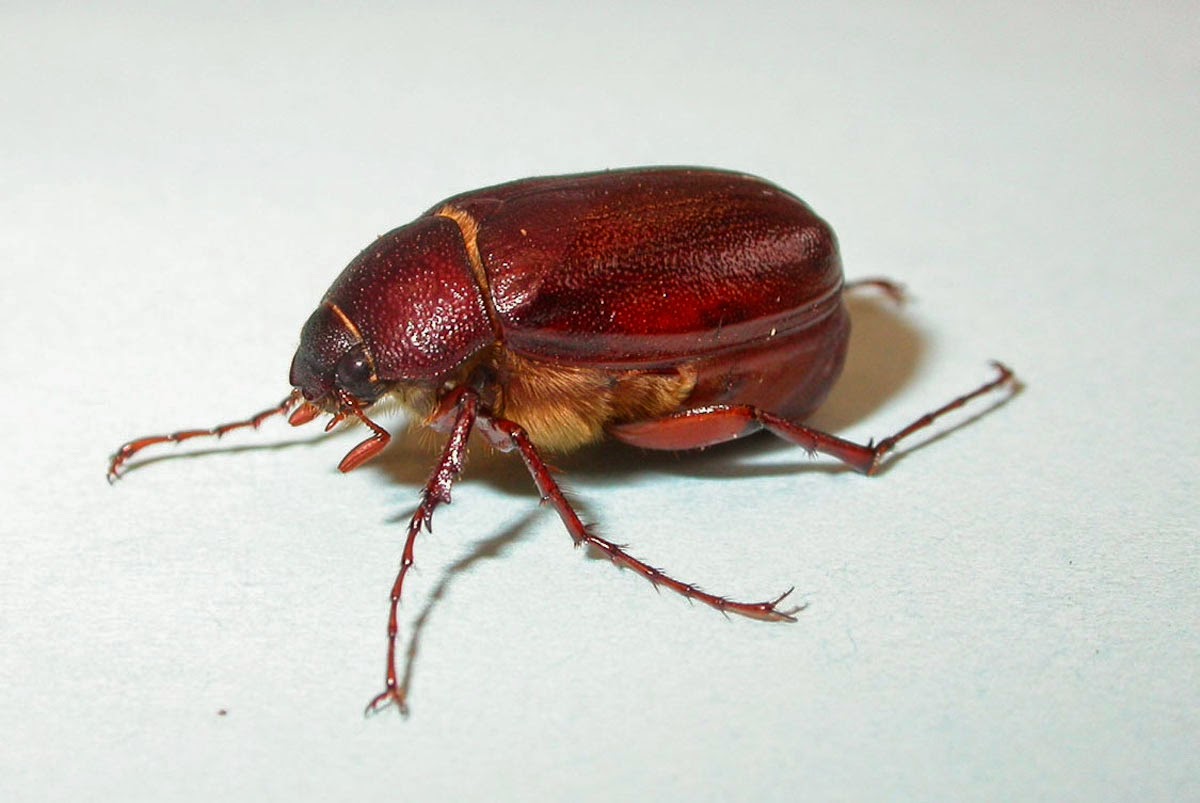June bugs are memebers of the Order Coleoptera. The name Coleoptera, derived from the Greek words "koleos" meaning sheath and "ptera" meaning wings, refers to the modified front wings which serve as protective covers for the membranous hind wings. There are more than 400 species of June bug beetles (Phyllophaga spp.) north of Mexico, and they are difficult to distinguish.
 |
| June beetle. Photo by Laura
C. Jesse University of Iowa Extension |
After mating, June beetle females dig a few inches into the soil to deposit their eggs, often near trees. Depending on the species. the grubs live underground for 1–4 years. During that time they feed on plant roots and descend much lower into the soil to overwinter. In late spring the larvae pupate for a few weeks, within a small cavity in the soil. They emerge as adults but stay underground for another year until the following spring, when they crawl to the surface to fly, mate, and lay eggs.
 |
| Larval form of June bugs Texas A&M Photo by Bart Drees |
Additional Information
Hemiptera - Entomology for Master Gardeners - University of Kentucky
Coleoptera - NC State University
Managing Turfgrass Insects of the Northeast Part 2: Root Infesting Insect Pests- Rutgers University
May June Beetles - University of Minnesota
The Sacred Scarab - McClung Museum